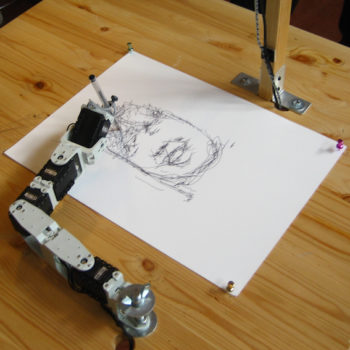Creatives Must Be Nearer the Heart of Programmatic: Q&A with Robert Webster, CSO, Crimtan
by Lindsay Rowntree on 3rd Aug 2016 in News

To achieve the dream of programmatic and creative working harmoniously together, which side needs to be in the driving seat? How can the industry ensure that effective campaign execution and delivery takes direction from both? ExchangeWire speak with Robert Webster (pictured below), chief strategy officer, Crimtan, who explains that creative and programmatic experts need to learn each others' skills for creative and programmatic to converge.
ExchangeWire: Technology-driven creative – everyone seems to be talking about it, but is it all talk and no action?
Robert Webster: There is quite a lot of that, yes. Good work is being delivered but, in many cases, the technology is not scalable enough or there are not enough qualified creative marketers to get it done on time and within budget. There is also an education piece required for advertisers on what to expect and when to use it. We have been asked to use dynamic for one-off, short time frame campaigns, which, whilst it can be effective, is not using the inherent ability for a setup to learn, improve, and gain economies over time.
Using data and technology to properly build creative is a couple of levels of magnitude higher than the ubiquitous retargeting-led creative. Consider that to have 'products viewed' ads follow users around the web, all you need is a site pixel, a feed, and a simple template. To reach the potential of data- and technology-driven creative, you need to have real marketplace data, flexible templates, and the skills and technology to combine them. Reporting and optimisation are levels above as well, as you need to understand how each variable impacts results. The proof of the pudding for advertisers is to challenge their providers to come up with a scalable program that can be delivered in a reasonable planning cycle (4-6 weeks) and at a cost respectful to the opportunity and then deliver proven returns.
When it comes to programmatic planning, is it being done in the right way and is creative part of the conversation?
It is, but not often enough. Programmatic planning needs to be outcome-led and to understand different parts of the funnel with relevant targets and attribution models for each stage. At an ambitious guess, only 10% of programmatic planning is being done in this way in the UK. Creative needs to be at the heart of the conversation, but in almost all cases it is done in a separate silo.
How does creatively executed programmatic work in practice?

Robert Webster, Chief Strategy Officer, Crimtan
There are two main flavours: machine learning and marketing-rules-based. Both of these start off from the same point: a set of creative templates are approved and a library of copy, images, videos, fonts and other assets are put together. Machine learning then takes these elements and, using multivariate techniques, finds the most effective combinations for different types of users. For example, it may find that users in different parts of the country prefer different holiday destinations, colours of cars, styles of clothes, and so on. Marketing-rules-based is, as it sounds, about setting rules as to which types of assets different people should see. A simple example is men’s clothes for men, women’s clothes for women. Showing locations of local stores and dealerships is also common. Best practice, in my view, is to combine the approaches, use marketing-led rules to set out the messaging strategy. Then let the machine have the freedom to work out the little details that add up to a big enhancement in performance.
What needs to change for programmatic and creative to work more harmoniously? Who should shoulder the responsibility?
As mentioned earlier, we need to have creatives much nearer the heart of programmatic. Look around most programmatic teams and how many creative experts do you see? Almost none. Equally, how many creative teams have strong programmatic skills? Everyone needs to take responsibility here, as all sides will benefit. However, if I were an advertiser, I would be demanding creative expertise from my programmatic providers and a close collaboration (possibly an integration) with the creative teams. Both creative and buying should share responsibility here and, equally, both should share in the success of successful campaigns. Technology selection also now needs to understand the needs of creative much more than it has in the past.
Do current creative practices need to evolve for creative and programmatic to be effective?
100%. First of all, we need more people who are skilled in this space. Creative planning needs to think in a fashion that, where appropriate, can leverage programmatic techniques. That means using templates, asset libraries, and rules to achieve creative goals. Creatives need to be more au fait with using programmatic technology or at least engaging with a 'production layer' to turn their static work into a dynamic setup.
Is it creative-driven programmatic or programmatic-driven creative? How should it be planned?
Today, it's programmatic-driven creative; but there is no reason why creative should not be the lead driver. It needs to be planned by experts who understand both the creative and the programmatic worlds (in an increasing number of channels). In practice, this means that planning should be led by the outcome the advertiser wants to achieve and an understanding of how different messages will achieve that for different parts of the target audience. This then becomes about planning data to target users and matching that to creative options.








Follow ExchangeWire